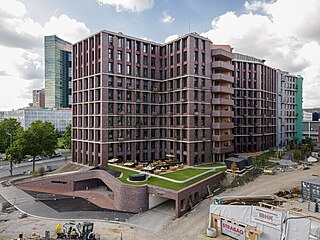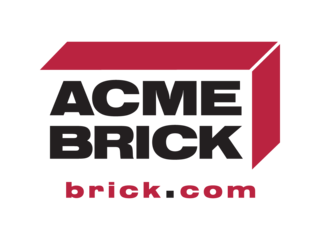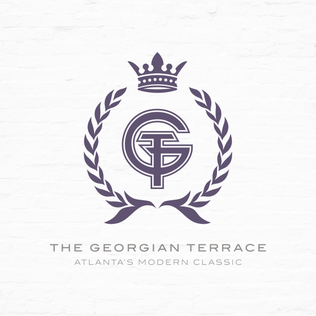 | |
| Industry | Clay industry |
|---|---|
| Founded | 1916 |
| Founder | B. Mifflin Hood |
| Defunct | 1946 |
| Fate | Dissolved |
| Headquarters | |
The B. Mifflin Hood Brick Company is a defunct American manufacturer of clay bricks and tiles that was based out of Atlanta, Georgia.
 | |
| Industry | Clay industry |
|---|---|
| Founded | 1916 |
| Founder | B. Mifflin Hood |
| Defunct | 1946 |
| Fate | Dissolved |
| Headquarters | |
The B. Mifflin Hood Brick Company is a defunct American manufacturer of clay bricks and tiles that was based out of Atlanta, Georgia.
The company was formed by and named after Benjamin Mifflin Hood, a ceramicist born in Cambridge, Maryland. Hood moved to the Atlanta area in 1904 and soon became involved in the brick manufacturing industry. Hood was appalled by the widespread use of convict leasing in Georgia's industries, and as early as 1905, signed his name on advertisements for bricks that encouraged customers to "buy free labor." [1]
In 1916, he formally incorporated the company and constructed a factory to produce quarry tile. Shortly after this the company produced ceramic rings used for explosives manufacturing during World War I. [1]
After the war's end the company grew and became a significant producer of clay roof tiles in addition to their brick and quarry tile. [2] At its height, the company had Georgia plants in Adairsville, Rome, Calhoun, and Daisy, and North Carolina plants in Norwood. [3] The company was a major proponent for the establishment of a school of ceramic engineering at Georgia Tech, which later was absorbed into the current School of Materials Science and Engineering. [1]
Hood died in 1946, and despite its success, the company dissolved soon after. [1]
The company's tiles and bricks were widely used through the American South and can be found on many structures.
Georgia Tech continues to retain a B. Mifflin Hood professorship position in honor of Hood and his contributions to the program. [1]
The East Lake Golf Club's clubhouse was made with B. Mifflin Hood roof tiles in 1926, and when it was expanded in 2008, they were matched by Ludowici for the new addition. [4]
B. Mifflin Hood's 1909 office building and showroom in Atlanta was added to the National Register of Historic Places in 2018. [1]

Ludowici is a city in Long County, Georgia, United States. The population was 1,703 at the 2010 Census and an estimated 2,221 in 2018. The city is the county seat of Long County. It is a part of the Hinesville-Fort Stewart metropolitan statistical area (MSA).

Tiles are usually thin, square or rectangular coverings manufactured from hard-wearing material such as ceramic, stone, metal, baked clay, or even glass. They are generally fixed in place in an array to cover roofs, floors, walls, edges, or other objects such as tabletops. Alternatively, tile can sometimes refer to similar units made from lightweight materials such as perlite, wood, and mineral wool, typically used for wall and ceiling applications. In another sense, a tile is a construction tile or similar object, such as rectangular counters used in playing games. The word is derived from the French word tuile, which is, in turn, from the Latin word tegula, meaning a roof tile composed of fired clay.

Wienerberger AG is an Austrian brick maker which is Europe's leading manufacturer of roof tiles and the world’s largest producer of bricks.

A brickworks, also known as a brick factory, is a factory for the manufacturing of bricks, from clay or shale. Usually a brickworks is located on a clay bedrock, often with a quarry for clay on site. In earlier times bricks were made at brickfields, which would be returned to agricultural use after the clay layer was exhausted.
Ludowici Roof Tile, LLC., based in New Lexington, Ohio, is an American manufacturer of clay roof tiles, floor tiles, and wall cladding. The company was established in 1888 with the formation of the Celadon Terra Cotta Company in Alfred, New York. It has created tile for many prominent buildings throughout the United States.

Architectural terracotta refers to a fired mixture of clay and water that can be used in a non-structural, semi-structural, or structural capacity on the exterior or interior of a building. Terracotta is an ancient building material that translates from Latin as "baked earth". Some architectural terracotta is stronger than stoneware. It can be unglazed, painted, slip glazed, or glazed.
The Elgin-Butler Brick Company manufactures structural ceramic glazed masonry products at a plant northeast of Austin, Texas, United States. The company has regional market dominance in structural brick and other ceramic products.

Acme Brick Company is an American manufacturer and distributor of brick and masonry-related construction products and materials. Founder George E. Bennett, chartered the company as the Acme Pressed Brick Company on April 17, 1891, in Alton, Illinois, although the company's physical location has always been in Texas. The company grew to become the largest American-owned brick manufacturer by the mid-20th century and was the first of its type to offer a 100-year limited guarantee to its customers. Acme Brick Company was acquired by Berkshire Hathaway on August 1, 2000.

The Chicago Varnish Company Building is a building built in 1895 as the headquarters of one of the leading varnish manufacturers in the United States, the Chicago Varnish Company. The building is a rare example of Dutch Renaissance Revival-style architecture in Chicago, and is marked by a steeply pitched roof paired with stepped gables of red brick and light stone in contrasting colors. The building was designed by Henry Ives Cobb, a nationally recognized architect whose other significant works include the former Chicago Historical Society Building, the Newberry Library, and the original buildings for the University of Chicago campus. The building was listed on the National Register of Historic Places on June 14, 2001, and was designated a Chicago Landmark on July 25, 2001.
Quarry tile is a building material, usually 1⁄2 to 3⁄4 inch thick, made by either the extrusion process or more commonly by press forming and firing natural clay or shales. Quarry tile is manufactured from clay in a manner similar to bricks. It is shaped from clay, and fired at a high temperature, about 2,000 °F (1,000 °C).

The Ace Art Company is a historic commercial and industrial building in Reading, Massachusetts. Built in 1924, the single-story brick building is the only Art Deco building in Reading. It was listed on the National Register of Historic Places in 1985.

The Georgian Terrace Hotel in Midtown Atlanta, part of the Fox Theatre Historic District, was designed by architect William Lee Stoddart in a Beaux-Arts style that was intended to evoke the architecture of Paris. Construction commenced on July 21, 1910, and ended on September 8, 1911, and the hotel opened on October 2, 1911. The George C. Fuller Construction Company was contractor, and the developer was Joseph F. Gatins, Jr.

Roof tiles are overlapping tiles designed mainly to keep out precipitation such as rain or snow, and are traditionally made from locally available materials such as clay or slate. Later tiles have been made from materials such as concrete, and plastic.

Gladding, McBean is a ceramics company located in Lincoln, California. It is one of the oldest companies in California, a pioneer in ceramics technology, and a company which has "contributed immeasurably" to the state's industrialization. During the heyday of architectural terra cotta, the company "dominated the industry in California and the Far West."
Ceramic building material, often abbreviated to CBM, is an umbrella term used in archaeology to cover all building materials made from baked clay. It is particularly, but not exclusively, used in relation to Roman building materials.

Woodbine Public Library, also known as Carnegie Public Library, is located in Woodbine, Iowa, United States. The library was organized in 1907, and it was initially housed in the jail section of city hall. If there was inmate in the jail the public had no access to the library. The city council appointed a board of trustees in 1908 and they applied to the Andrew Carnegie for a grant to build a library building. They received a grant on April 28, 1909, for $7,500. The Eisentraut Company, a Sioux City architectural firm designed the Prairie School building. F. X. White of Eldora, Iowa was the contractor. The building was completed in February 1909, and it was dedicated on March 9 of the same year. This was the first library built in Harrison County.

The Lithgow Valley Colliery and Pottery Site is a heritage-listed former pottery and colliery and now pottery and visitor attraction at Bent Street, Lithgow, City of Lithgow, New South Wales, Australia. It was built from 1876 to 1945. It is also known as Lithgow Pottery and Brickworks. The property is privately owned. It was added to the New South Wales State Heritage Register on 2 April 1999.

The B. Mifflin Hood Brick Company Building is a historic building in Atlanta, Georgia. Located in the Virginia–Highland neighborhood, the building was built in 1909 and was added to the National Register of Historic Places in 2018.

Ludowici Roof Tile Company Historic District is a historic district in New Lexington, Ohio. It was listed on the National Register of Historic Places in 2021.